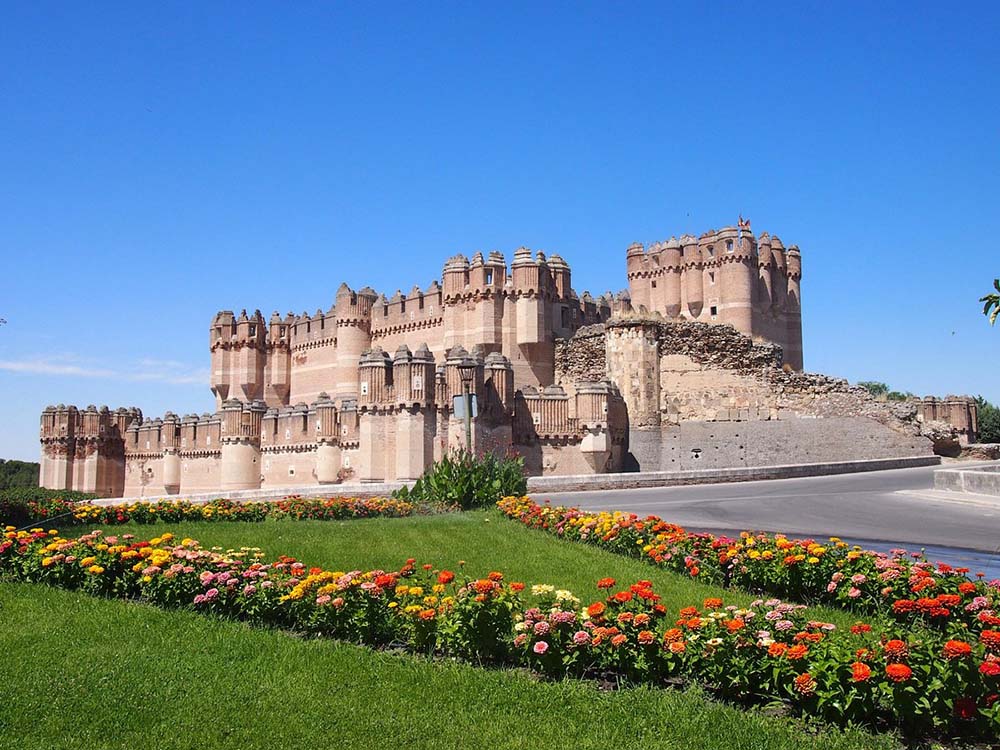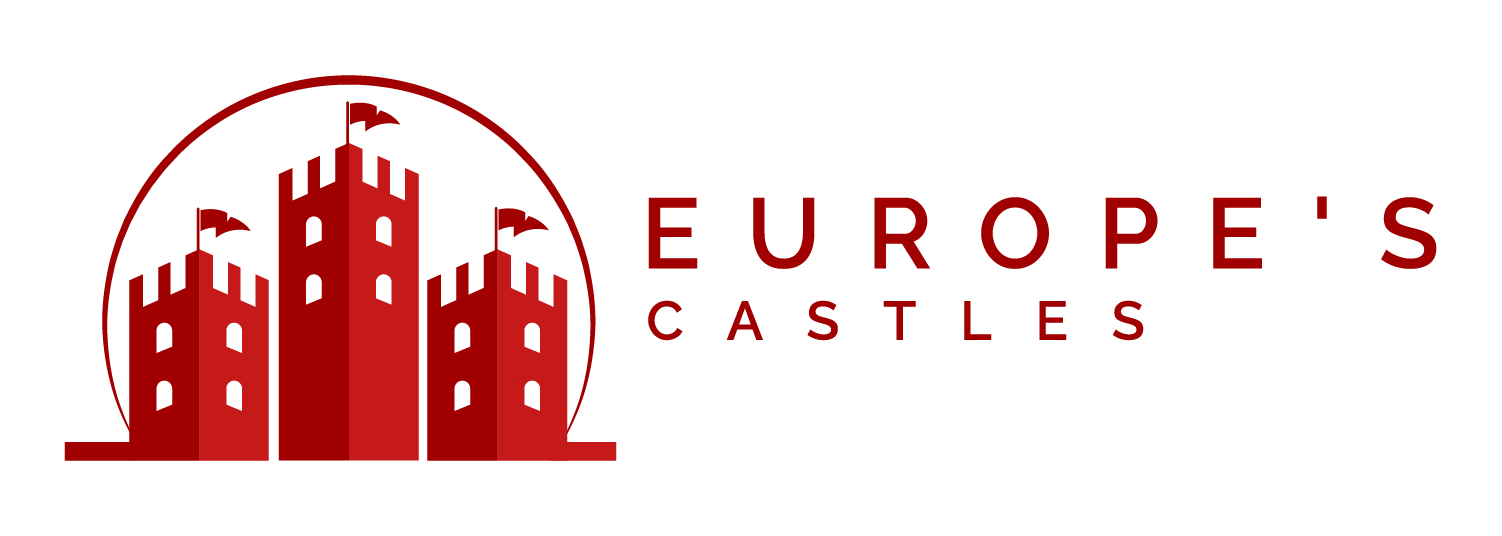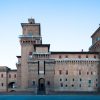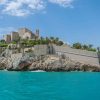Castillo de Coca
The Castillo de Coca, a splendid example of medieval military architecture, stands as one of Spain’s most impressive and well-preserved fortresses. This grand castle is renowned for its unique blend of Gothic and Mudejar architectural styles. It has captivated visitors with its imposing presence and intricate design. Erected in the 15th century, the castle served as both a military stronghold and a noble residence. This reflects the dual purposes often seen in Spanish castles of that era. The Castillo de Coca is not only a testament to Spain’s rich history. It is also a symbol of the architectural innovation that flourished under the influence of different cultures in the Iberian Peninsula.
Location of Castillo de Coca
Situated in the heart of Spain, Castillo de Coca is located in the province of Segovia. It is within the autonomous community of Castile and León. The castle stands on the outskirts of the small town of Coca. This is approximately 50 kilometers northwest of Segovia city. It is also about 150 kilometers from Madrid. Its strategic position near the Eresma and Voltoya rivers provided natural defenses, making it an ideal location for a fortress during its time. The surrounding landscape is characterized by rolling plains and woodlands. This adds to the castle’s picturesque setting, making it a popular destination for history enthusiasts and travelers exploring the region.

History of Castillo de Coca
Don Alonso de Fonseca, the Archbishop of Seville, commissioned the construction of Castillo de Coca in the mid-15th century. Construction began around 1453 and concluded in 1493. The castle was erected on the site of an ancient Roman settlement, emphasizing its strategic importance.
Crafted by Moorish artisans, the castle is a prime example of Mudejar architecture, characterized by its brick construction and intricate decorative elements, including geometric patterns and ornamental arches. This style was prevalent in Spain during the late Middle Ages, particularly in areas with a strong Islamic influence.
The castle served a dual purpose as both a military fortress and a luxurious residence for the Fonseca family. Its design includes thick defensive walls, a deep moat, robust towers, and elegant courtyards. The semicircular bastions flanking the walls further enhanced its defensive capabilities.
By the 16th century, the castle’s strategic importance declined as Spain’s focus shifted to its territories in the Americas. Nonetheless, Castillo de Coca remained a symbol of power and later came under the ownership of the Duke of Alba. Over the centuries, the castle experienced periods of neglect and restoration, reflecting the changing fortunes of its owners.
Significant damage occurred during the Peninsular War in the 19th century when French troops occupied the castle. Following this period, the castle fell into disrepair. Recognizing its historical value, people initiated restoration efforts in the 20th century to preserve this remarkable example of Spain’s architectural heritage.

Current status
Today, Castillo de Coca stands as a remarkable example of Spain’s cultural and architectural heritage. The Spanish government owns the castle, and the Junta de Castilla y León manages it. They have undertaken extensive restoration work to preserve its unique Mudejar features and stabilized the structure, ensuring future generations can enjoy it.
The castle is open to the public and visitors are allowed to explore its various sections. These include the impressive keep (torre del homenaje), the formidable outer walls, and the elegant inner courtyards. The keep is one of the tallest in Spain. It offers panoramic views of the surrounding countryside. This provides a glimpse into the strategic advantage the castle once held.
Inside, the castle houses a museum dedicated to the history of Castillo de Coca and the region. Exhibits include artifacts from the castle’s past. There are also displays on Mudejar architecture and the Fonseca family. Visitors can also view the castle’s chapel. Here, original frescoes and decorative elements have been carefully preserved.
Castillo de Coca stands as a testament to Spain’s rich historical tapestry and architectural ingenuity. Its unique blend of Gothic and Mudejar styles, combined with its strategic location and storied history, make it a remarkable example of the castles that dot the European landscape. Visitors today can immerse themselves in the castle’s history. They can marvel at its architectural beauty. They will gain a deeper understanding of the cultural influences that shaped Spain during the Middle Ages.
Admission
Community features
Castle features
Video
Location
Official website
Featured listings














